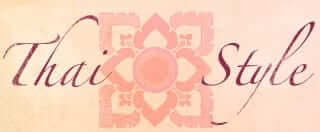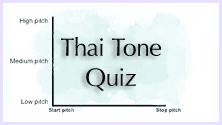งานแต่งงาน : Ngaan Dtàeng~Ngaan
The important combination of a modern married life is love and understanding between two people. Before holding a wedding and building a beautiful family, a couple has to get to know each other well by learning each other’s favourite things, visiting their partner’s family and deepening their love.
In Thai society, after a couple has decided to get married, the groom contacts and asks a “ผู้ใหญ่ : Phû Yài = a senior” in the groom’s family or a well-known or respected senior in the community or by both groom’s and bride’s family to be a ‘เถ้าแก่ : Thâo Gàe : a go-between who arranges a marriage” to be his representative. At the beginning of the wedding process, the representative will ask a bride’s parents for their daughter to marry the groom and make an agreement about a dowry payment. If the agreement is succeeded, the representative will bring the couple’s date of birth to a monk and inquires him for picking an auspicious day and time for the wedding.
Traditional Thai wedding has existed for hundreds of years and some processes are occasionally changed to suit the beliefs and environment in each period in order to make the most important day of a couple perfect and well-organised.
In the present, there are processes including both engagement and wedding which could be completed easily and quickly in one day, the details are as follows:
1.Religious Ceremony
This is the first process of wedding. It aims to bless a couple to have prosperity of marriage life. Nine monks will be invited to the ceremony because Thai people believe that number nine is the luckiest number; it represents wealth and success. The monks will chant while lighting a candle in a bowl of water to make lustral water which will be used later in water pouring ceremony. After that, the couple will give food to the monks.
2.Khăn Màak Procession
At an auspicious time, the groom’s representative will lead the parade consisting of drummers and traditional folk dancers to the bride’s house. There are 3 types of parade. First, ขันหมากเอก : Khăn Màk Èk is the parade of couples of things, such as two bowls of betel nuts and betel leaves, two bags of mung beans, popped rice, and sesame seeds. Second, ขันหมากโท : Khăn Màk Tho is the parade of auspicious things such as Thai food, sweets and banana and sugarcane trees decorated with red paper. Last, ขันหมากหมั้น : Khăn Màk Măn is the parade of dowry, such as golds, jewelries bracelets, necklaces, earrings, golden rings and money which are wrapped in red paper and contained in a bowl. When the groom’s parade starts to go to the bride’s house, the parade leader will acclaim 3 times and drummers will beat their drums in order to entertain the parade. After arriving at the bride’s house, there will be girls who are the bride’s relatives waiting for Khăn Màk parades and welcoming them into their house.
3.Barring The Groom From Approaching The Bride
This is an old tradition which is used for entertaining the wedding. There will be 3 symbolic doors that the groom has to pass through. Each door is created by silver and gold necklaces or satin belts which are held by members of bride’s family. The bride will stay in a room and the groom will not be able to see her until he can get through all obstacles. However, at present times, the number of symbolic doors can be changed depending on suitability. After the groom gets through all symbolic doors, he will have to wash his feet and then go to meet his bride.
4.Making A Marriage Proposal
The representative of the groom will negotiate with the bride’s family about a dowry payment and present it on a tray. After counting the dowry payment, the parent of both parties will scatter beans, sesame seeds, paddies, popped rice and flowers on the dowry, then wrapped them with a red cloth. After that, the bride’s mother will hold the dowry payment on her shoulder in order to keep it.
5.The Engagement
At an auspicious time, the groom and the bride exchange their engagement rings. The bride prays on the groom’s lap to show her respect, and then the groom kisses on his bride’s cheek.
6.Water Pouring Ceremony
This is the highlight of wedding ceremony. The couple will sit at a traditional water pouring table; the bride sits in the left side of the groom. They both will have ceremonial headdresses on their heads which signify the joining of them. Each guest will take the ceremonial water pouring conch shell filled with holy water to pour over the couple’s hands and bless them to have a happy marriage life. During the ceremony, there will be the couple’s friends who are single stand behind the couple.
7.Paying Respects To The Elders
After the completion of water pouring ceremony, the couple will hold a tray with incense sticks, candles and flowers to pay respect to the elders and ask for forgiveness for what the couple had done wrongly by kneeling on the floor in front of their parents, then put both hands palms down to the floor and bend their heads down to touch their hands. The bride’s parents will be paid respect first, then the groom’s parents. The parents from both sides will bind threads for the couple and provide them money or valuable presents which will be useful for their marriage life.
8.The Nuptial Bed
In order to wish the couple happy marriage life and prosperity, the parents will prepare the bed by using meaningful items. There are a mortar which represents steadily love, a cane which represents long life, a green which represents peaceful married life, a cat doll which represents liking to stay at home and a bowl of beans, sesame seeds and paddies which represents prosperity. As a part of the wedding ceremony, the couple will be sent to the bedroom, but they are not going to sleep for real. This is the end of the wedding process.
Written by Kruu Nid / Edited by Kruu Jiab



